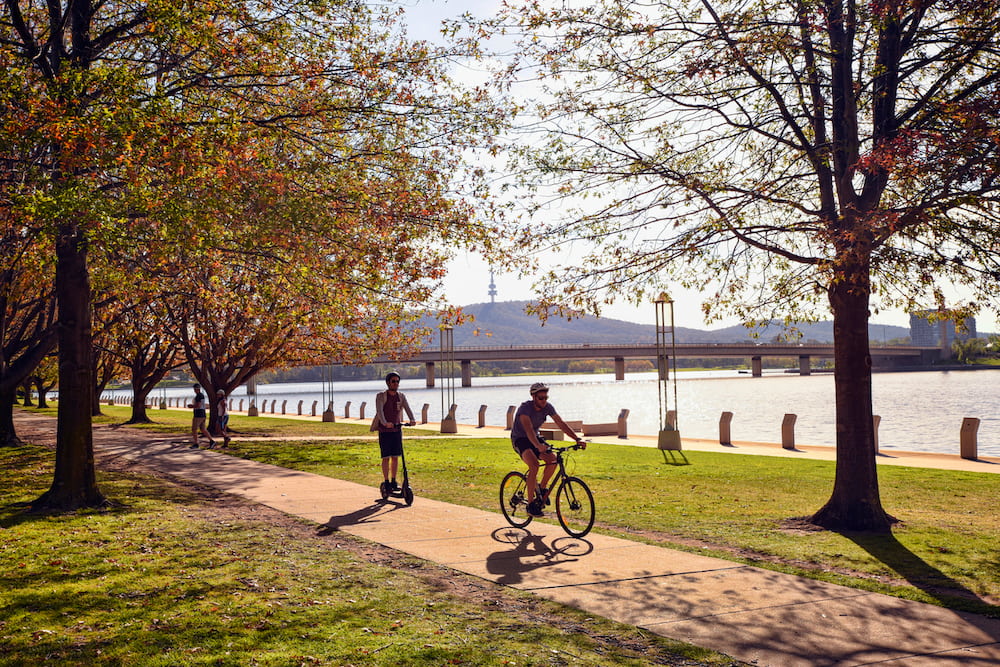In its budget submission, cycling advocacy group Pedal Power ACT has called for the ACT Government to reprioritise funding from road duplications toward active travel infrastructure – or, as they put it, “to harness the power of induced demand for good, not evil”.
“Earlier this year the ACT Government released the Active Travel Plan, which has admirable goals for increasing active travel in our city,” the group’s executive director, Dr Simon Copland, said.
“Despite this, however, our transport budget is still overwhelmingly focused on the construction and duplication of roads.
“Research shows however that road duplications make traffic problems worse, not better. Duplications and expansions create induced demand, where, as roads become wider and can accommodate higher volumes of traffic, more people will feel incentivised to use such infrastructure. Investment in more car-centric infrastructure therefore represents a significant waste of public money, all while increasing emissions, worsening collective health, and furthering traffic congestion.”
Pedal Power says that the principal of induced demand also works for cycling infrastructure.
“Multiple examples around the world show that investing in a connected, safe and well-maintained cycling network greatly increases the number of people on bikes,” Dr Copland said.
“And this has a number of positive flow-on effects for the entire community, increasing the health and wellbeing of citizens, reducing emissions and even making trips faster and less stressful for car drivers as they now share the road with less motor vehicles.
“The ACT Government has recognised this with the release of the Active Travel Plan. We just need the Government to implement it. This requires adequate funding to be allocated to this work and no more road duplications or lane additions to be used as a way of addressing traffic congestions.”
In its submission, Pedal Power recommends the ACT Government unlocks Canberra’s potential as an active travel city by:
• Investing funds to Design, Build, Upgrade and Maintain a comprehensive Cycling Network across Canberra.
• Supporting the development of cycle and pedestrian friendly neighbourhoods.
• Investing in recreational cycling, rebuilding Canberra’s image as ‘Australia’s Cycling Capital’.
• Building a highly connected, diverse, medium density, city that provides a wide range of living style options to best suit individual needs.
“Many cities in the world have successfully achieved a transition to a more people-centred, rather than car-centred model and are reaping the rewards,” Dr Copland said. “Why can’t Canberra do the same?”



